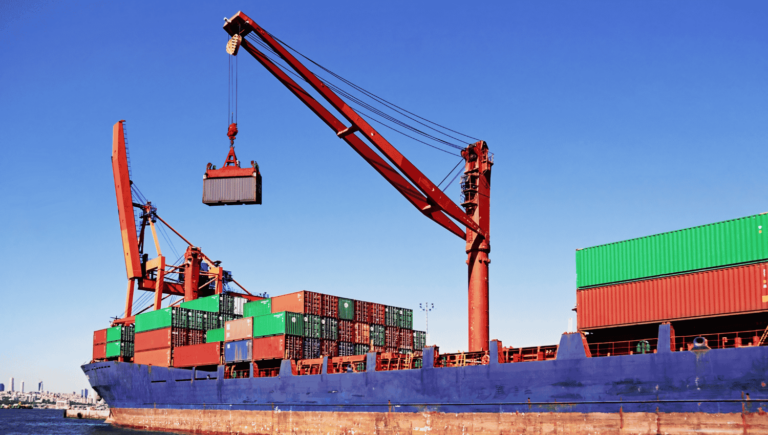Incoterms®: A Strategic Approach
Time and again, we come across clients that tend to ask (or not ask) the right questions when it comes to risk and loss or damage of goods. This usually comes with the assumption that someone else took care of it. How often do we hear our clients say, “Purchasing takes care of it…”, “the Sales department has a process for that…”, “don’t worry, trade compliance is in charge of all of that…”. More often than not, the shipment gets to where it should go without any problems, which sometimes leads to neglecting some details on the next shipment. On that rare occasion that there is an issue with a shipment, all parties involved would be best served if attention to details, including Incoterms® Rules are well defined.
In this interview, I talked to Arthur O’Meara, a seasoned trade compliance expert and consultant for many years. Arthur is trained by the source of the Incoterms® Rules and has been providing training in this and other trade compliance matters for twenty years. He has authored a book on Incoterms® Rules that you can get on our International Trade Books page and has also created a unique method to teaching Incoterms® Rules using a strategic approach which attendees are sure to embrace.
Global Training Center: What is your background?
Arthur O’Meara: I began in this field as an entry writer more than 20 years ago. I worked in a multinational environment at the North American HQ for Bosch, starting in import compliance, then eventually becoming responsible for supply chain security for North America. I finished my career at Bosch as the Export Control Officer and Empowered Official. I am a Licensed Customs Broker with an MBA from DePaul University in Chicago.
GTC: How did you get started with Incoterms®?
AO: As an entry writer, I had to consult the Incoterms® Rules on the commercial invoices for the entries I was filing to ensure I reported the correct value for Customs purposes. For those imports under a freight prepaid Incoterms® Rule (the C- or D- Rules), I would need to acquire sufficient documentation to back out the non-dutiable charges. This often mandates conversations with the importer-of-record on the importance of a rated bill of lading, for example.
Once I began wondering why some imports were done freight prepaid, and others were freight collect, I was hooked on Incoterms® Rules.
GTC: Have you had formal training or is it all on the job experience?
AO: Both. I completed the Masterclasses in Paris, France offered by the International Chamber of Commerce (the authors of the Incoterms®). Additionally, I am a PADI-certified SCUBA Instructor, so you know you can trust me. After all, if you can’t trust your dive instructor when you’re 80 feet underwater, who can you trust? 🙂
GTC: What do you feel is (or are) the biggest mistake(s) people make when it comes to Incoterms®?
AO: First, they don’t understand the differences between EXW and FCA. Second, they use FOB inappropriately. Finally, they have an old-school mentality regarding their sales: “I just need to get the goods on the dock and let the customer take it from there.” This attitude allows the seller to leave money on the table. The seller should be profiting not just on the sale of the goods, but on the sale of transportation charges.
Finally, one common error I see is sellers shipping their goods to their customers, then passing on those shipping costs at net. The sellers are then losing money in at least two ways:
1. First, they are losing money because they are financing, for free, the transportation of the goods for the duration of their payment terms.
2. Second, the administrative costs of arranging, paying for, and monitoring the shipment are not build into the piece price of the goods when the goods are sold freight prepaid. Selling goods freight prepaid takes greater administrative effort and should be rewarded with a higher sales price.
GTC: I have seen and talked to many people who do not think about, or know that they should be aware of, their Incoterms® in their trade compliance. Why do you think it is neglected so much?
AO: Because of the Uniform Commercial Code in the United States. In the US, the UCC has an article on freight terms. One of those if FOB. Consequently, when discussing domestic purchases and sales under the UCC, it is not just acceptable but common for folks to say things like “I bought it FOB plant!” or “I sold it FOB our warehouse!” When companies moved to an international sales and purchasing business model, they often continued to use FOB in their language, not knowing it’s inapplicability to their international transactions.
Regarding trade compliance, Incoterms® Rules directly define the entered value. Additionally, EXW and DDP are the only two Rules that require a party to deal with a foreign customs regime.
GTC: As a follow-up, why is it important to implement Incoterms® to your trade compliance process?
AO: The negotiated Incoterms® Rule identifies whom, the importer or exporter, will be responsible for arranging and paying for export clearance, import clearance and the supply chain security declarations associated with each. Additionally, the Rule will define the customs value for both the export and the import. Because the Rule will address the transfers of risk, cost and possession from seller to buyer, it also addresses the transfer of trade compliance from seller to buyer.
GTC: You just published a book, I understand you have a new approach to teaching incoterms®, can you tell me about that?
AO: I’d be happy to! Incoterms® Rules address three things: the transfer of possession, costs, and risk from seller to buyer. My book addresses the strategic and tactical application of Incoterms® Rules in negotiations for purchases and sales. It emphasizes the importance of maximizing profit through the controlling of main carriage, and of minimizing risk through careful selection of proper Incoterms® Rules in various situations. My book also addresses the best Incoterms® Rules to use, in order for purchasing and also for sales.
Many graphics are used to illustrating concepts that may be counter intuitive, such as the difference between possession and ownership, the difference between delivery and arrival, and the grouping of Incoterms® Rules into groups.
Traditionally, Incoterms® Rules were divided into four groups based on their first letter: E-, F-, C- and D-. In Incoterms® 2010, the International Chamber of Commerce divided them again into two different groups based on the Rule’s applicability to different modes of transportation. The first group of Rules is applicable for moves in all modes of transportation. The second group of Rules is to be used only for goods moving via vessel. In my book, I divide the Rules into two new groups: freight prepaid and freight collect. In my experience, the negotiation of whether or not the buyer picks up the goods at the seller’s door or allows the seller to deliver the goods to the buyer is the most negotiable factor in domestic and international purchases and sales. The book emphasizes the importance of minimizing landed cost in the purchase of materials and to maximizing profit in the sale of goods through the strategic application of Incoterms® Rules.
If you are interested in learning more about Incoterms® Strategies with Arthur O’Meara join us In-Person in any of the two sessions coming up!
Milwaukee, WI (October, 14) Register now!
Chicago, IL (November, 11) Register today!







